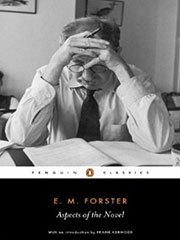 In E. M. Forster’s Aspects of the Novel (absolutely obligatory reading for anyone wanting to write a novel) he says, “The King died and then the queen died is a story. The king died and then the queen died of grief and that is a plot.”
In E. M. Forster’s Aspects of the Novel (absolutely obligatory reading for anyone wanting to write a novel) he says, “The King died and then the queen died is a story. The king died and then the queen died of grief and that is a plot.”
A good plot, I believe, is one of the keys to writing good fiction for young people. Why? Consider how young people think. Of course children experience a full range of emotions, but they will most often relate to those emotions in terms of what happens. “My friend is mad at me.” If you associate with kids you’ve heard those words. But very quickly it becomes, “My friend is mad at me. She won’t talk to me.” Look at that in light of Forster’s remark and you will see why young readers respond to plot. It is what happens that is important.
I can give you an example from one of my own books, the popular True Confessions of Charlotte Doyle.
 There are a number of key moments in the book, one of which happens when Charlotte defends her mutinous actions by telling the captain what kind of girl she is. It’s an important part of the book. But if you ask (and I have asked many times) what is the moment in the book which best defines Charlotte, most girls will respond, “When she cuts off her hair.” That is the transformative moment. It is the action that is most meaningful, not when Charlotte explains who she is.
There are a number of key moments in the book, one of which happens when Charlotte defends her mutinous actions by telling the captain what kind of girl she is. It’s an important part of the book. But if you ask (and I have asked many times) what is the moment in the book which best defines Charlotte, most girls will respond, “When she cuts off her hair.” That is the transformative moment. It is the action that is most meaningful, not when Charlotte explains who she is.
In short, the task of the writer of fiction for young people is to transform ideas into actions. Create that action and your readers will turn the page. They will also will live (and love) your book.
1 thought on “What makes it a plot?”
I learn something every day from your blog.